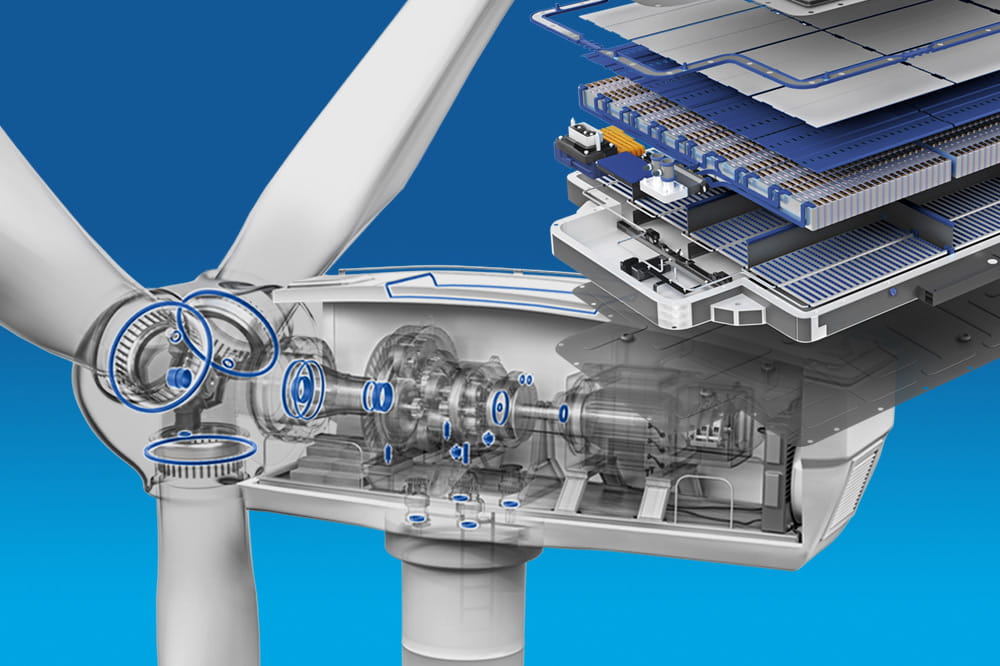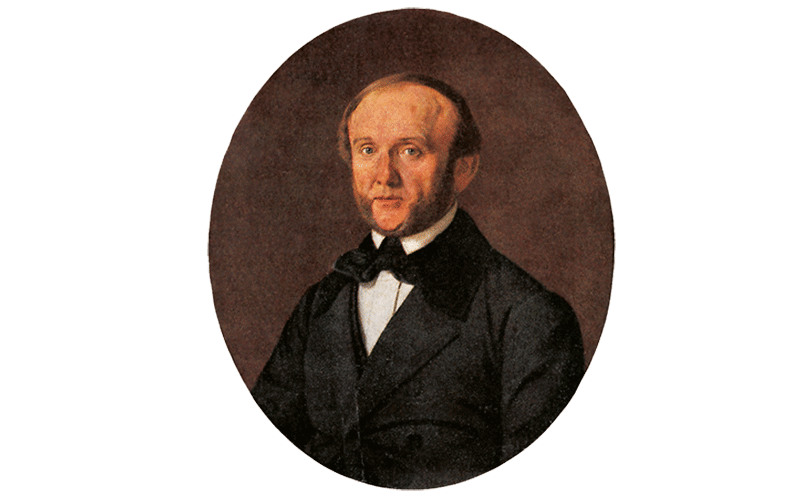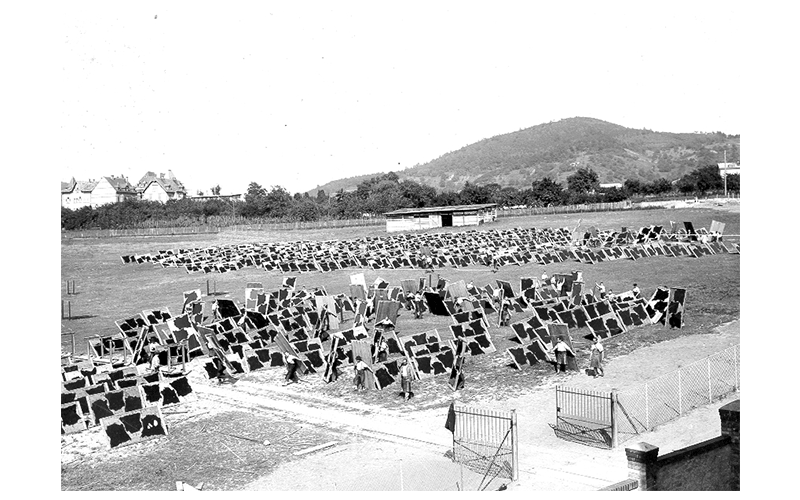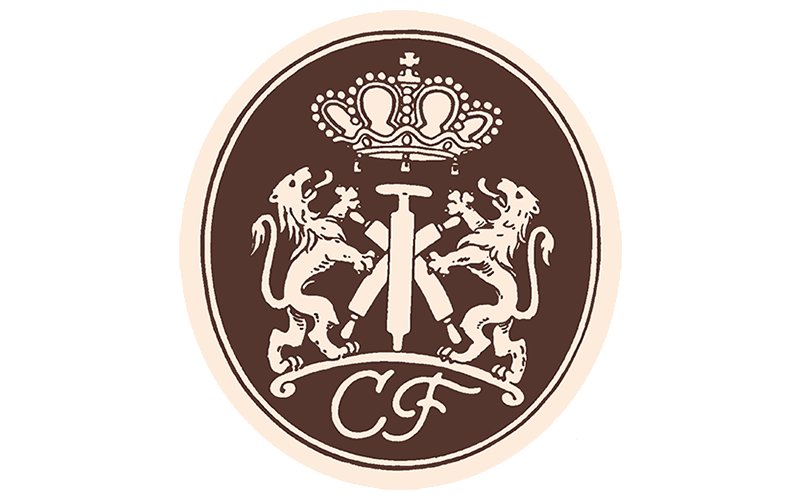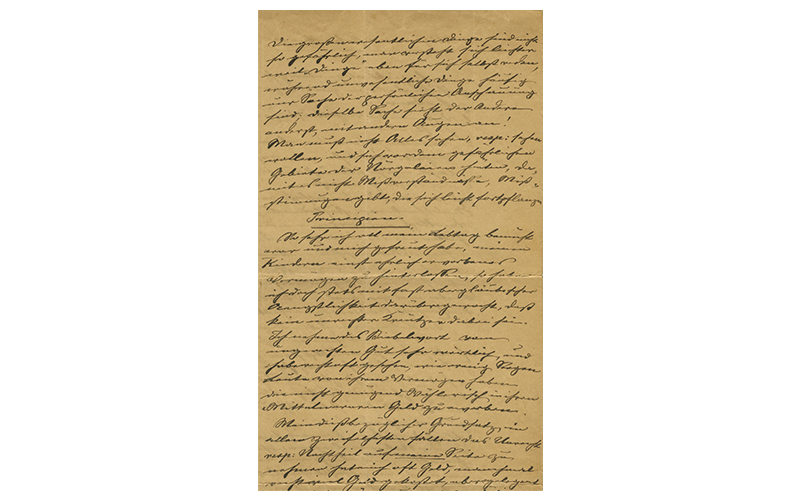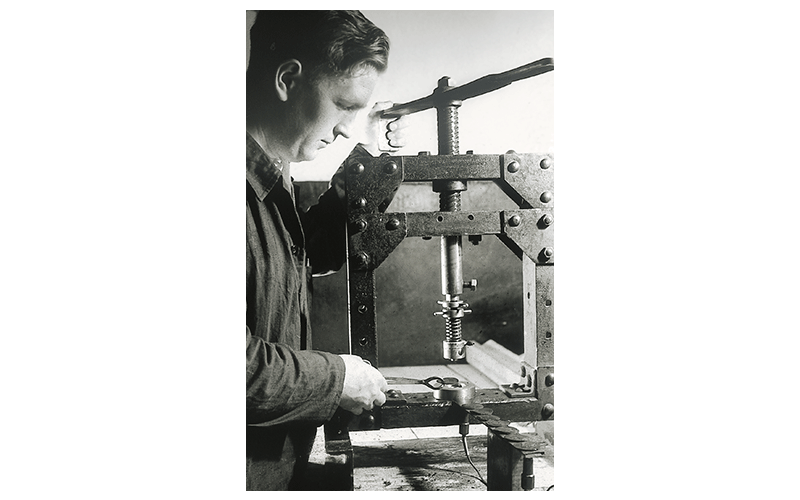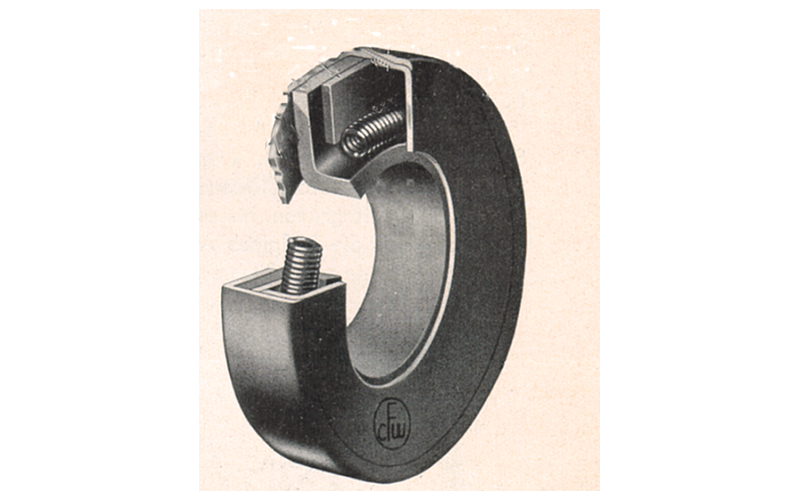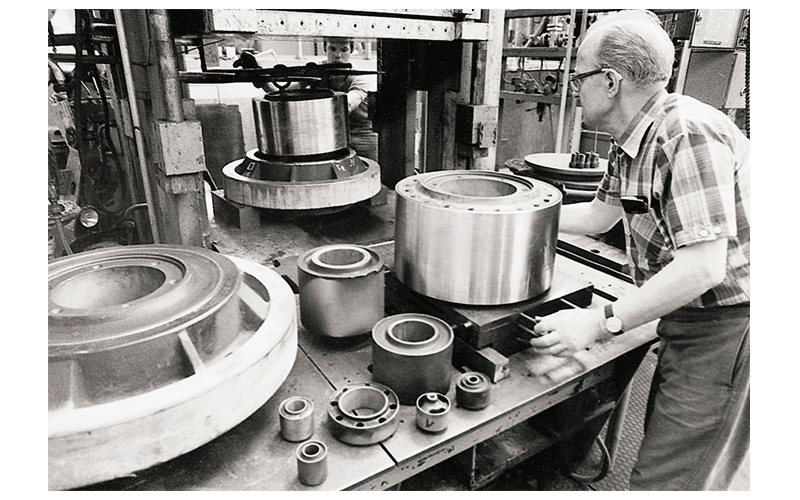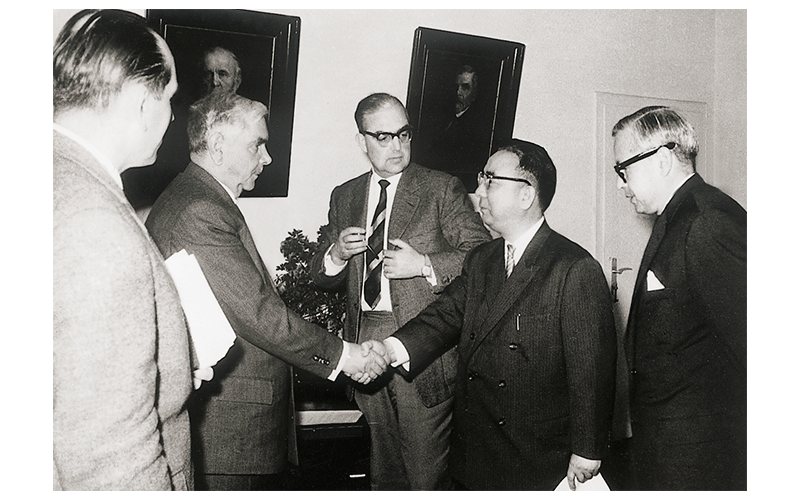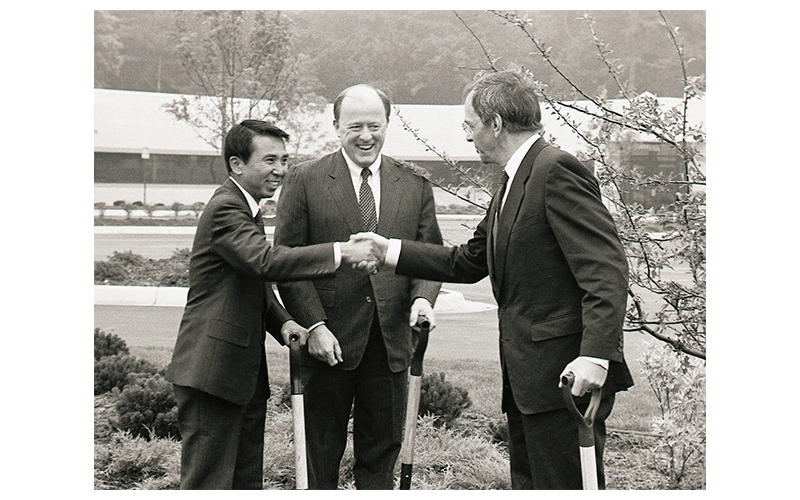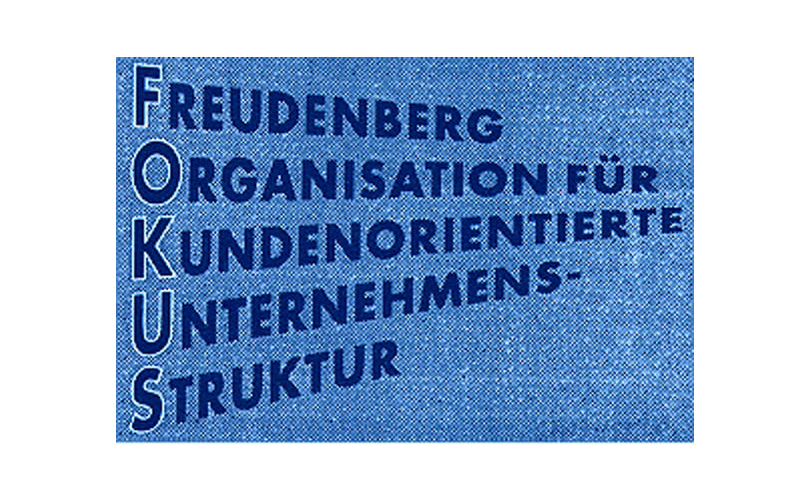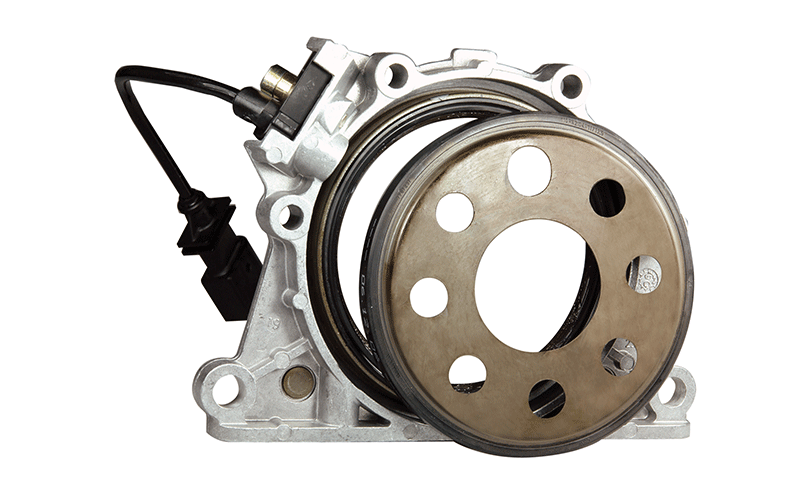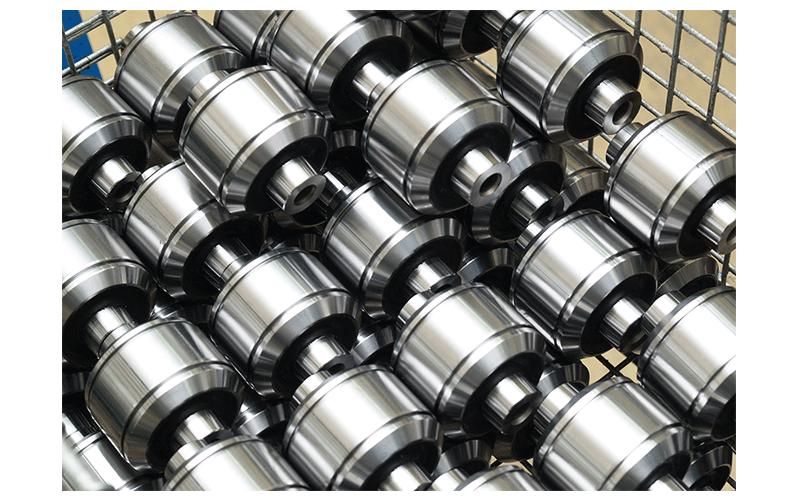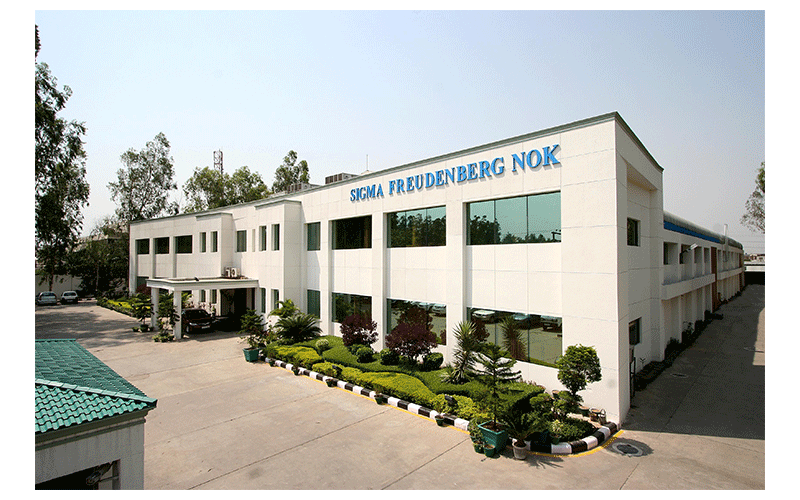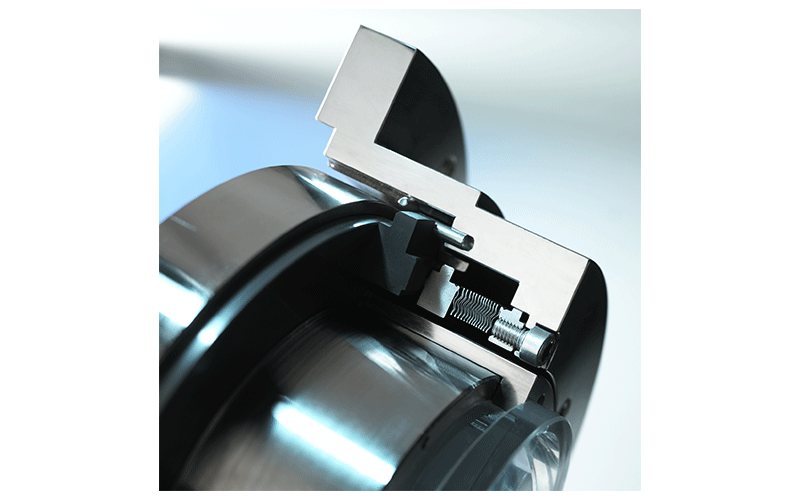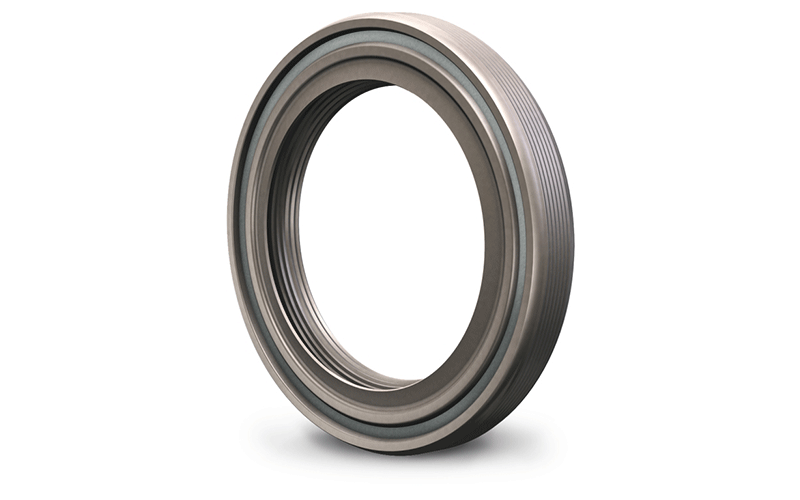-
1849 – Heintze & Freudenberg established


On February 9, 1849, the tannery company Heintze & Freudenberg, which has 50 employees in Weinheim, is established by the partners Heinrich Christian Heintze (1800-1862) and Carl Johann Freudenberg (1819-1898).
The two entrepreneurs produce fine calf leather. The leather production plant consists of about 75 production steps, which are individually optimized in order to produce high quality leather. This quality standard is still part of Freudenberg's conception of itself.
From the beginning, there is extensive international business (including exports to the USA, Great Britain and France).
-
1850 – Patent leather developed


One year after the establishment of the company, Freudenberg develops its first innovation: the company flourishes with the introduction of patent leather production in 1850. In 1855, patent leather already accounts for more than 80% of production.
In order to meet the high demand, Freudenberg builds a second plant in Weinheim in 1852: a lacquering shop.
At the same time, the first overseas branch is opened in the UK. A global procurement (rawhide import) and sales network is established, including business relationships with Italy (1851), Scandinavia (1852), Brazil (1853), Spain (1854) and Russia (1855).
-
1874 – Carl Freudenberg becomes sole owner of the company


In 1874, the partner Leopold Heintze dies and Carl Johann Freudenberg becomes sole proprietor. The company is renamed Carl Freudenberg and develops into the largest tannery in Germany, and later in Europe.
-
1887 – First business principles


In 1887 Carl Johann Freudenberg introduces the next generation. His sons, Friedrich Carl (1848-1942) and Hermann Ernst Freudenberg (1856-1923) become partners. The company already employs more than 500 employees.
On the occasion of his sons joining the company, Carl Johann Freudenberg writes his business principles. Modesty, honesty, a solid financial foundation and the ability to adapt to the respective changes are Carl Johann Freudenberg's most important principles for successful entrepreneurship. Today, these guiding principles form the basis of Freudenberg's business principles.
-
1929 – First seals produced


The global economic crisis affects the entire leather industry in Germany to the brink of viability. The sale price for finished calf leather drops dramatically: it is only a fifth of the purchase price for rawhide.
To secure the jobs of what are now more than 3,500 employees, the management develops its own short-time working model. One half of the workforce continues the production, while the other stays at home: they change roles every two weeks. Employees and their families thus have the chance to get through the difficult period of the global economic crisis.
The difficult economic situation means that the management team of Richard, Hans, Otto and Walter Freudenberg introduce diversification to the company with entirely new products. The first step is the production of leather sleeve seals for the growing automotive industry in 1929.
-
1932 – Simmerring® developed


In 1932 a new era at Freudenberg begins with the revolutionary Simmerring® sealing technology. Its name is taken from the Freudenberg developer Walther Simmer. The Simmerring, a radial shaft sealing ring for sealing rotating shafts replaced the felt seals previously used.
These had often resulted in overheating seals and damage to engine and axle bearings. The Simmerring® delivers significantly better results from the very start. It consists of a sheet metal housing with an integrated leather sleeve. Using a garter spring improves the radial force and sealing performance.
-
1936 – Simmerring® with rubber sealing lip developed


Freudenberg replaces leather with rubber as a sealing material. In 1936, a sealing ring made of Perbunan/NBR is developed: it has a high temperature and swelling resistance when exposed to engine lubricating oil.
The NBR Simmerring® is a quantum leap for the sealing technology. The new material opens up better options with regard to the shape of the seal body. It is even possible to make the basic shape in the vulcanization tool, after which the sealing lip is precisely adjusted to the respective application using a special finishing process. In operation, the sealing effect is further enhanced by the internal pressure of the medium to be sealed. The integrated garter spring provides additional downforce. The Simmerring® with the NBR sealing lip therefore ensures optimal sealing performance of rotating shafts, such as the transmission shaft in the car, for the first time. This innovation makes Freudenberg the leading seal experts.
-
1957 – Entry into vibration control technology


The next diversification step follows in 1957. Freudenberg becomes involved in vibration control technology, which complements its expertise from sealing technology. It produces shock absorbers, vibration absorbers and ultra bushings under the name Metalastik. A partnership with the Italian seal manufacturer Corte & Cosso is formed.
-
1960 – First partnerships in Japan


1960 marks the beginning of two formative partnerships. Freudenberg turns its attention to the Japanese market and finds partners with whom it taps very successful new markets over the coming decades.
Freudenberg forms a close partnership in sealing technology with the Nippon Oil Seal Industry Company (NOK) in Tokyo. In the nonwovens sector Freudenberg establishes a joint venture with Japanese partners: the Japan Vilene Company in Tokyo. However, the partnerships are not limited to the markets; they also include intensive technology transfer, from which both sides benefit.
-
1973 – Expansion in Brazil


Involvement in the seal factory Rubrasil SA in São Paulo (founded 1958). In 1988, Freudenberg and NOK join to form Freudenberg NOK - Componentes Ltda.
-
1977 – Entry into electronics business


In 1977, to further spread business risks and open up new markets, Freudenberg begins to produce electromechanical components and printed circuit boards.
As a result, Freudenberg and its Japanese partner company NOK develop the market for flexible printed circuit boards for electrical and electronic equipment and components under the name Simflex from the 1980s. From 1996, the company is run under the name of Freudenberg Mektec Europe.
-
1989 – FNGP established


The American sealing activities by Freudenberg and its Japanese partner NOK are introduced in a joint venture: the Freudenberg-NOK General Partnership (FNGP).
-
1995 – First production on Chinese mainland


Freudenberg opens its first production facilities in China in 1995. Seal factories are established together with its Japanese partner NOK in Changchun and Wuxi. An interlining production company is established in Suzhou with the Japan Vilene Company.
Freudenberg's involvement in the BRIC countries (Brazil, Russia, India and China) has a long tradition. The first business relationships in Brazil and Russia date back to the 1850s, followed by India and China in the 1920s. From the mid-1990s, the markets in the BRIC countries are systematically developed
-
1996 – FOKUS


In a large project under the name FOKUS (Freudenberg Organisation für kundenorientierte Unternehmens-Struktur - Freudenberg Customer-Oriented Company Structure Organization) Freudenberg adapts its structures to the wide and international positioning of the company in 1996.
The company is divided into independent Business Groups that can operate independently and quickly with the focus on the customer in constantly changing markets. Freudenberg becomes a decentralized company.
The new, more flexible Business Groups focus on their respective markets and core competencies. This involves reassessing the product range and streamlining the distribution channels.
-
1997 – First mechatronic sealing components


The Simmerring® takes on additional functions. Encoder technology is developed and the seal becomes a product that performs tasks beyond sealing. With integrated sensor technology, the encoder can measure the engine revolutions, making it possible to control ABS braking systems and engine management systems.
-
1999 – Entry into vibration control technology for rail vehicles


Freudenberg Schwab is founded in 1999. This is a joint venture with the Schwab Group involving the production of vibration control components for rail vehicles in Adliswil, Switzerland. This move marks Freudenberg’s entry into vibration control technology for rail vehicles. In 2010, Freudenberg Seals and Vibration Control Technology assumes 100% ownership of the joint venture.
-
2003 – Expansion in India


In 2003, in the Indian city of Mohali, a production facility is constructed for seals produced by the joint venture Sigma Freudenberg NOK PVT. Ltd, founded in 2000 by Freudenberg Seals and Vibration Control Technology, Sigma and NOK. In the coming years, India develops alongside China into one of Freudenberg’s key growth markets.
-
2004 – Burgmann Dichtungswerke acquired


With the 2004 acquisition of Burgmann Dichtungswerke based in Wolfratshausen near Munich, Freudenberg expands its sealing business to become a specialist in mechanical seals.
Activity in the oil and gas industries increases substantially. As a result, together with Japanese partner Eagle Industries, the globally active EagleBurgmann Group is created.
-
2009 – LESS - Emissions reduction through innovative sealing technology


With the launch of the Low Emission Sealing Solution Program (LESS), Freudenberg offers numerous innovative sealing solutions for the reduction of CO2 emissions in vehicles.
These extend from reduced-friction Simmerrings, encoder technology for fuel-saving start-stop systems, innovative materials for transmission seals and weight-reduced housing elements, through to pressure-resistant sealing solutions for engine downsizing.
-
2011 – More strategic milestones


The creation of new business groups, e.g. Freudenberg Schwab, on January 1, 2011 is a clear indication of Freudenberg’s plans for strategic growth.
In 2011, Freudenberg is awarded the German Innovation Prize as well as the German Innovation Prize for Climate and Environment for its ground-breaking narrow strip-forming laser welding (SUL) technology as part of the Simmerring® production process. This cutting-edge resource-efficient technology developed by Freudenberg for the production of metal rings eliminates waste almost completely from the production process.
-
2012 – LESS program expanded


The revolutionary new Levitex® crankshaft seal comes very close to the vision of a frictionless seal. The Levitex® crankshaft seal creates an air cushion that seals the engine compartment with virtually no friction.
Levitex® can thus reduce the CO2 emissions of vehicles by 0.5 to 1 gram per kilometer. And because less friction means less wear, Levitex® also prolongs operating lifespan.
Freudenberg Sealing Technologies acquires a 50% share in the Schneegans Group, which from now on trades as Schneegans Freudenberg GmbH. This joint venture constitutes a strategic investment in cutting-edge multi-component injection molding production expertise and pioneering plastic products particularly for the automotive industry as well as an expansion of the company’s Low-Emission Sealing Solutions (LESS) program.
-
2014 – Restructuring and expansion of the sealing and vibration control technology business


The business groups Freudenberg Schwab Vibration Control (vibration-control technology for rail car) and Dichtomatik (sealing solutions) are integrated into the Freudenberg Sealing Technologies business groups as part of the FOKUS 2.0 project to restructure the sealing and vibration-control technology business within the Freudenberg Group.
With the acquisition of the family-run company Tobul Accumulator Inc., a global leader in the development and manufacture of hydraulic accumulators, Freudenberg expands its sealing solutions business while strengthening its accumulator business.


